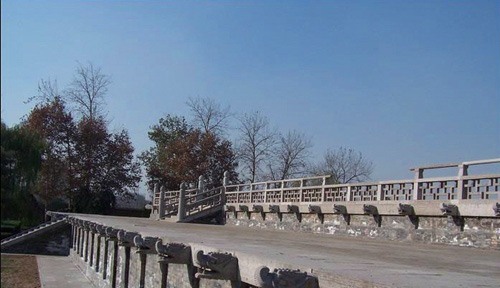 |
|
The Daming Palace was the center of politics, economics and culture during the Tang Dynasty. In the 280 years of its existence, the Daming Palace functioned as the hub of international communication at that time. More than 17 emperors have lived and presided over government affairs in the palace.
|
The case of Daming Palace is particularly sensitive. Xi'an, the capital of Shaanxi Province was once the capital of China and known as Chang'an during the Tang Dynasty (618-907). The city was the starting point of the Old Silk Road and the first city in the world whose population exceeded one million. Built in the seventh century, Daming was the best known imperial palace in the Tang Dynasty, and of the 21 Tang emperors, 17 lived and ruled from its splendor. It was called the "zenith of China's palace complexes."
The Daming Palace Ruins Region, covering 3.2 square kilometers is 4.5 times the area of the Beijing's Forbidden City and 8 times the area of the Louvre, was put under national protection in 1961 which effectively banned large-scale construction there. Since the ruins are buried underground, no water discharge facilities and pipelines are allowed. "In rainy seasons it is water-logged. Sewage cannot be discharged, and tap water cannot be installed into homes. In summer, the area simply stinks. Even though it is in urban area, its environment is far inferior to rural townships," explains Ge Chao, deputy director of the Planning and Promotion Bureau of the Xi'an Qujiang Daming Palace Ruins Region Preservation and Reconstruction Office.
In the mid-1990s, Xi'an's urbanization was accelerated, and the urban area expanded accordingly. The city has sprawled beyond the third ring road, but the Daming Palace Ruins Region, which is within the second ring road, has remained intact. "The significant change is the population growth. The area of the Daming Palace Ruins Region is not large, but its population density is the highest," says Ge Chao.
Xi'an's history dates back 3,100 years. It was the capital of 13 dynasties, so numerous historical sites are buried underground. Major ruins in the region include those of the Han Dynasty (202-220 B.C.), Great Wall, and the Epang Palace of the Qin Dynasty (221-206 B.C.). The ruins sprawl over 108 square kilometers, making up one-hundredth of Xi'an's total area.
To protect cultural heritage, Xi'an city authorities must submit a report to the State Administration of Cultural Heritage before conducting municipal construction projects, even for subways. With the expansion of the urban area, the ruins region has become the core area of the city, and it is an unavoidable problem in urban construction.
"In the past, we wanted to change the face of the ruins region, but couldn't because of an underdeveloped economy. Now that we can afford it, we must restore the dignity of this historical site. We will preserve the major ruins region in a scientific way, and make rational use of it. It will not be a burden in our urban development, but a new growth center," says vice mayor Duan Xiannian.
Editor: Xie Fang
Source: China Today
|

